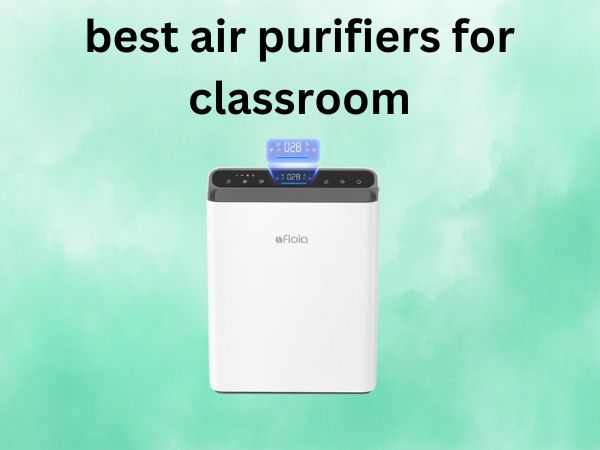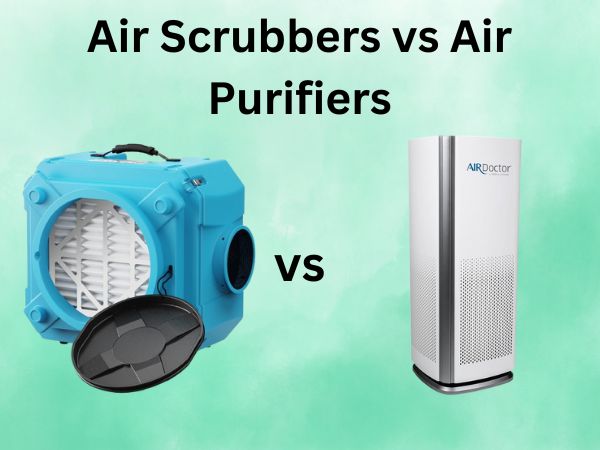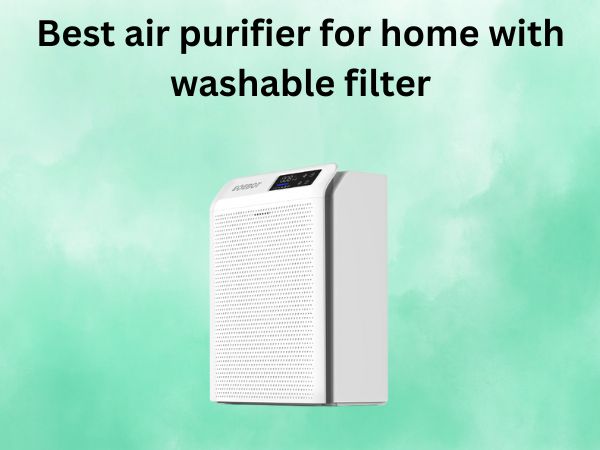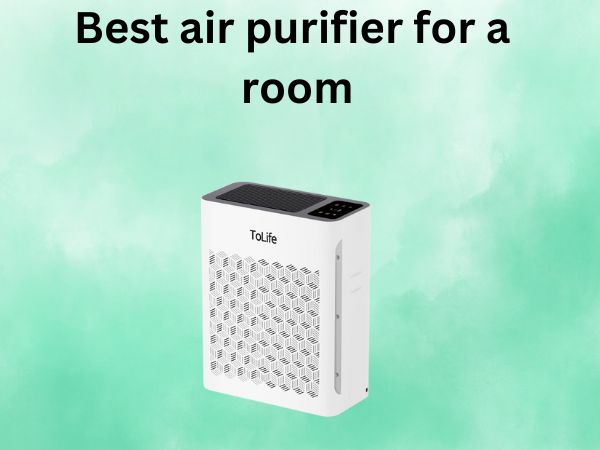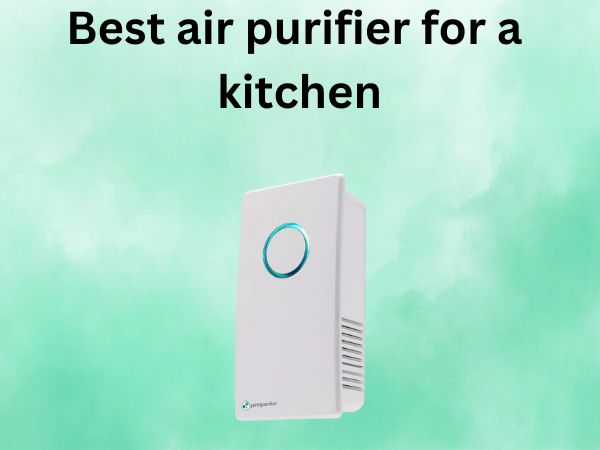5 Best Air Purifiers for Classrooms [In 2026]
Clean air isn’t just a luxury—it’s an essential component of a healthy learning environment. With students and teachers spending 6-8 hours daily in classrooms, air quality directly impacts cognitive function, health, and overall educational outcomes. Poor classroom air quality has been linked to increased absenteeism, reduced concentration, and even long-term health issues.
Air purifiers offer a powerful solution to this often-overlooked aspect of educational infrastructure. By removing airborne contaminants like dust, allergens, bacteria, and volatile organic compounds (VOCs), these devices create healthier spaces where students can thrive. But with hundreds of options on the market, finding the right air purifier for your classroom requires careful consideration.
In this comprehensive guide, I’ll walk you through the five best air purifiers specifically suited for classroom environments in 2025. I’ve analyzed their performance, features, and value to help you make an informed decision that will benefit both students and teachers. Whether you’re dealing with allergy concerns, looking to reduce illness transmission, or simply want to improve the overall air quality in your educational space, this guide has you covered.
Let’s breathe easier and create healthier learning environments together!
Table of Contents
Top 5 Best Air Purifiers for Classrooms Review
LEVOIT Core 600S-P: Best Overall Air Purifier for Large Classrooms
The LEVOIT Core 600S-P stands out as the powerhouse option for large classroom environments, offering exceptional coverage and advanced features that make it ideal for educational settings.
Key Features and Specifications
- Coverage Area: Up to 3,175 square feet in 60 minutes (635 sq ft in just 12 minutes)
- CADR Rating: 410 CFM (697 m³/h) – among the highest in its class
- Filtration: 3-in-1 system capturing 99.97% of particles as small as 0.1-0.3μm
- Smart Features: WiFi connectivity, PM2.5 monitoring, and Alexa voice control
- Noise Level: 26dB on Sleep Mode to 59dB maximum
- Special Technology: VortexAir Technology 3.0 and AirSight Plus for precise air quality monitoring
- Energy Efficiency: Energy Star certified for reduced power consumption
The Core 600S-P employs LEVOIT’s exclusive AirSight Plus Technology, which uses advanced laser sensing to monitor air quality with twice the accuracy of standard infrared sensors. For classrooms where air quality can fluctuate dramatically throughout the day, this precision is invaluable.
Pros
- Exceptional Coverage: Can handle even the largest classrooms and open learning spaces
- Superior Filtration: Captures smaller particles (0.1μm) than many competitors
- HEPA Sleep Mode: Maintains high-level filtration even at lowest noise settings
- Intelligent Auto Mode: Adjusts to changing classroom air quality conditions automatically
- Easy Monitoring: App connectivity allows teachers to check air quality without disrupting lessons
- Light Sensors: Automatically dims display during video presentations or quieter activities
Cons
- Higher Price Point: Represents a significant investment for school budgets
- Size: Larger footprint (12.3″ x 12.3″ x 23.6″) requires thoughtful placement
- Filter Replacement Cost: Premium filters come with a higher replacement expense
Performance in Classroom Settings
User experiences highlight the Core 600S-P’s effectiveness in large spaces with multiple occupants. One user noted that after placing this unit in their bedroom, they “almost instantly stopped getting itchy eyes and stuffed up noses” despite having two double-coated dogs and living in an area with high pollen counts. This translates well to classroom environments, where allergens from multiple sources accumulate throughout the day.
The automatic mode is particularly beneficial in classroom settings, as it “kicked into high gear and cleaned the air within a minute” when detecting compromised air quality. For teachers managing multiple tasks, this responsive automation ensures air quality doesn’t require constant attention.
The Core 600S-P represents an ideal solution for schools prioritizing air quality in larger learning spaces, especially those with higher occupancy or where allergies and respiratory issues are common concerns.
LUNINO Double-Sided Air Purifier: Best for Dual-Action Filtration
The LUNINO Double-Sided Air Purifier brings an innovative approach to classroom air purification with its unique design that draws in air from multiple directions simultaneously.
Key Features and Specifications
- Coverage Area: Up to 3,000 square feet
- Design: Double-sided air intake for faster purification
- Filtration: 3-stage system with washable pre-filter, HEPA filter, and activated carbon
- Features: PM2.5 display, 6 fan modes including Auto and Sleep
- Special Function: Built-in aromatherapy option
- Noise Level: As low as 15dB in Sleep Mode
- Safety Features: Child lock function for classroom safety
- Certifications: ETL, FCC, EPA, CARB certified
The standout feature of the LUNINO purifier is its dual-intake design, which effectively doubles the air processing capability compared to traditional single-intake models. For classrooms where rapid air turnover is essential, this design provides a significant advantage.
Pros
- Faster Purification: Double-sided intake cleans air twice as quickly
- Washable Pre-filter: Reduces maintenance costs and extends filter life
- Whisper-Quiet Operation: 15dB sleep mode won’t disrupt classroom activities
- Real-time Air Quality Display: Shows PM2.5 levels so teachers can monitor classroom conditions
- Aromatherapy Option: Can help create positive learning environments with essential oils
- Multiple Timer Settings: 2, 4, or 8-hour options for energy conservation
Cons
- Bulky Design: May require more space than single-intake models
- No WiFi Connectivity: Lacks smart home integration available in some competitors
- Essential Oil Feature: Could potentially trigger sensitivities in some students
Suitability for Educational Environments
User testimonials emphasize the unit’s effectiveness in large, open spaces with multiple sources of air pollution—precisely the conditions found in most classrooms. One user with allergies noted that after using this purifier in their open-plan living area, “the difference in air quality has greatly improved. It’s noticeably cleaner, fresher, and I can breathe so much easier.”
The PM2.5 sensor provides valuable feedback, with users appreciating “seeing the improvement as the numbers drop.” For science classrooms, this visual representation of air quality could even serve as an educational tool, helping students understand environmental health concepts.
The washable filter is particularly advantageous for school budgets, with one user highlighting this as “a huge plus” for long-term maintenance. Schools looking to balance initial investment with ongoing operational costs will find this feature especially appealing.
The LUNINO air purifier offers an excellent balance of performance, economy, and features tailored to classroom environments where rapid air purification is a priority.
LEVOIT Vital 200S-P: Best for Allergy-Prone Classrooms
The LEVOIT Vital 200S-P specifically targets classrooms where allergies are a significant concern, with features designed to combat common allergens found in educational environments.
Key Features and Specifications
- Coverage Area: Up to 1,800 square feet per hour
- CADR Rating: 242 CFM
- Design: Traditional intake plus U-shaped air inlet for better pet hair and allergen capture
- Filtration: 3-stage system with washable pre-filter
- Smart Features: WiFi connectivity and VeSync app control
- Special Technology: HEPA Sleep Mode maintains filtration during quiet operation
- Light Detection: Adjusts display brightness based on ambient light
- Certifications: CARB certified
What distinguishes the Vital 200S-P is its explicit design focus on allergy triggers. The unique U-shaped secondary air inlet targets pet hair and larger allergens that might clog standard filters, making it ideal for classrooms where multiple allergen sources are present.
Pros
- Allergy-Focused Design: Specifically engineered to target common classroom allergens
- Innovative Air Intake: U-shaped design captures pet hair and larger particles effectively
- Washable Pre-filter: Reduces maintenance costs while extending filter life
- Smart Connectivity: Remote monitoring through the VeSync app
- Voice Control: Works with Alexa for hands-free operation
- Adaptive Display: Light sensor prevents bright displays during video presentations
Cons
- Medium Coverage Area: Not as powerful as some larger models
- Fewer Fan Speeds: Offers less granular control than some competitors
- Smart Features Require WiFi: Limited functionality in schools with restricted networks
Benefits for Students with Allergies
User experiences highlight the Vital 200S-P’s effectiveness for allergy sufferers. One user described it as “plug it in and forget it,” noting they “noticed a difference within 24 hours” in reducing allergens from pets. For classrooms with students suffering from allergies, this rapid improvement could translate to better attendance and focus.
Another user who purchased it specifically for allergies mentioned that “it seems to work well” at cutting down pet dander and improving general air quality. The unit’s quiet operation was also praised, with users reporting, “it runs most of the night and I don’t hear it,” suggesting it wouldn’t disrupt quiet classroom activities.
The smart features received particular appreciation, with one user mentioning how helpful voice control was for elderly family members—a feature that could benefit teachers who need to adjust settings while working with students.
For classrooms where allergies and respiratory sensitivities are frequent concerns, the Vital 200S-P offers targeted technology to create a more comfortable and inclusive learning environment.
Afloia Europa Air Purifier: Best Smart Air Quality Monitor
The Afloia Europa distinguishes itself with advanced monitoring capabilities that make it particularly valuable for maintaining consistent air quality standards in classroom environments.
Key Features and Specifications
- Coverage Area: Up to 2,000 square feet in one hour (320 sq ft 5x per hour)
- CADR Rating: 280 m³/h
- Air Quality Sensing: Upgraded laser sensor (not infrared) for faster, more accurate readings
- Filtration: 3-stage system capturing particles as small as 0.03 microns
- Display: Digital PM2.5 numerical readout and color-coded indicators
- Timer: Adjustable from 2 to 24 hours
- Noise Level: As low as 26dB in Sleep Mode
- Certifications: CARB certified
The Europa’s standout feature is its advanced laser air quality sensor, which provides more accurate real-time monitoring than standard infrared sensors. For classrooms where visibility of air quality metrics is desired, the clear digital display showing precise PM2.5 readings offers valuable feedback.
Pros
- Superior Air Quality Monitoring: Laser sensor provides faster, more accurate readings
- Visible Air Quality Indicators: Color-coded lights and numerical display show air quality at a glance
- Highly Effective Filtration: Captures ultra-fine particles down to 0.03 microns
- Extended Timer Options: Up to 24-hour settings for weekend operation
- Responsive Auto Mode: Quickly adjusts to changing classroom conditions
- Night Mode Option: Eliminates display lights for distraction-free operation
Cons
- Limited Smart Features: No WiFi or app connectivity
- No Washable Pre-filter: Higher long-term maintenance costs
- Fewer Fan Speed Options: Less customization than some competitors
Real-time Air Quality Management
User testimonials emphasize the unit’s effectiveness and sensitivity to changing air quality conditions. One user reported, “When we first plugged it in the light was on green and after about a few hours switched to blue meaning the air quality was even better.” They also noted its responsiveness during cooking, when “it went from blue (best) to green (good) and the numbers indicator went up as well,” confirming its active monitoring capabilities.
This sensitivity would be particularly valuable in classrooms where activities throughout the day—from art projects to science demonstrations—can temporarily impact air quality. The visual indicators provide immediate feedback, allowing teachers to adjust activities if necessary.
Multiple users praised the unit’s quiet operation, with one specifically mentioning it’s “whisper quiet on low speeds and even on high you can barely hear it.” Another appreciated that it “DOESN’T fan out any smells,” an important consideration for students with asthma or sensitivities.
For classrooms prioritizing real-time air quality feedback and responsive purification, the Afloia Europa offers an excellent combination of monitoring precision and effective filtration.
PuroAir 240 HEPA Air Purifier: Best Compact Option for Smaller Classrooms
The PuroAir 240 offers a space-efficient solution that doesn’t compromise on effectiveness, making it ideal for smaller classrooms or specialized learning areas.
Key Features and Specifications
- Coverage Area: Up to 1,000 square feet in one hour
- Design: Compact footprint (8.5″ x 8.5″ x 14.25″)
- Filtration: Three-layer system with pre-filter, HEPA filter, and activated carbon
- Performance: Filters particles 700X smaller than human hair (99.9% efficiency)
- Features: Smart particle sensor and auto mode
- Sleep Mode: Extra-quiet operation for undisturbed learning
- Certifications: CARB, ETL, ISO, UL, and Energy Star
- Warranty: 2-year risk-free warranty
Despite its smaller size, the PuroAir 240 is backed by impressive scientific testing, with the manufacturer citing independent lab verification of both filtration performance and sleep quality improvements for users.
Pros
- Space-Efficient Design: Compact footprint works well in smaller classrooms
- Science-Backed Performance: Lab tested for effectiveness against common pollutants
- Energy Efficient: Energy Star certification for lower operating costs
- 360° Air Intake: Draws air from all sides for efficient purification
- Multiple Certifications: Meets various safety and performance standards
- Extended Warranty: 2-year coverage exceeds many competitors
Cons
- Smaller Coverage Area: Not suitable for very large classrooms without multiple units
- Limited Smart Features: No WiFi or app connectivity
- Fewer Fan Speed Options: Less customization than some larger models
Space-Efficient Design for Limited Areas
User experiences highlight the PuroAir 240’s effectiveness despite its compact size. One user who had “researched many brands” praised it as “exceptionally quiet on auto and moves a ton of air through from all sides.” They particularly appreciated its “attractive and unobtrusive design,” noting it was “great size, great price.”
Another user successfully employed it in a “musty basement that’s about 600-700 square feet,” reporting that “just one of these is able to keep that musty smell away.” This effectiveness in challenging environments suggests it would perform well in classroom settings, which often have similar air quality challenges.
The filter’s performance was validated by users, with one initially skeptical reviewer noting that “after changing the filter it noticeably traps a lot of dust, spores, and anything else.” This visible evidence of effectiveness would be reassuring for school administrators assessing the unit’s impact.
For smaller classrooms, specialized learning areas, or schools looking to deploy multiple smaller units rather than one large purifier, the PuroAir 240 offers a balance of effectiveness, economy, and space efficiency.
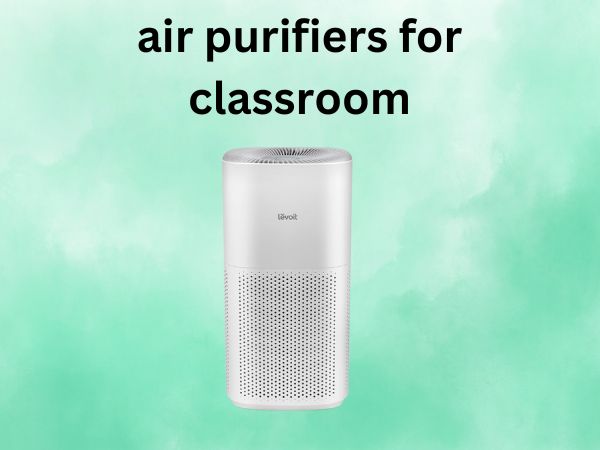
Understanding Air Purifier Technologies
Before diving into specific models, it’s crucial to understand the technologies that make these air purifiers effective in classroom settings.
HEPA Filtration Explained
High-Efficiency Particulate Air (HEPA) filters are the gold standard in air purification technology. True HEPA filters can capture 99.97% of particles as small as 0.3 microns—that’s smaller than most allergens, dust particles, and many bacteria. For classroom environments where multiple students gather daily, this level of filtration is essential for reducing airborne contaminants.
The effectiveness of HEPA filtration is particularly important in classrooms, where the concentration of particulate matter often exceeds recommended levels due to high occupancy and limited ventilation. Studies have shown that implementing HEPA filtration in educational settings can reduce airborne particles by up to 90%, significantly improving indoor air quality.
Activated Carbon Filters and VOC Removal
While HEPA filters excel at capturing particulate matter, they don’t address gaseous pollutants and odors. This is where activated carbon filters come in. These specialized filters absorb volatile organic compounds (VOCs), chemical emissions from school supplies, and unpleasant odors that can distract students and teachers.
In classroom environments, where art supplies, cleaning products, and even new furniture can off-gas potentially harmful compounds, activated carbon filtration provides an additional layer of protection. This dual-approach filtration system—combining HEPA and activated carbon—creates a comprehensive air cleaning solution tailored to educational settings.
Smart Features and Air Quality Monitoring
Modern air purifiers have evolved beyond simple filtration devices. Today’s advanced models include real-time air quality monitoring, automatic mode adjustments, and smart connectivity features that make them particularly valuable in busy classroom environments.
Air quality sensors can detect changes in particulate matter levels throughout the day, adjusting operation accordingly. This means the purifier works harder during high-activity periods (like after recess or during art projects) and conserves energy during quieter times. For teachers already juggling numerous responsibilities, these smart features ensure air quality management happens automatically without adding to their workload.
Now that we understand the core technologies, let’s examine the top five air purifiers for classroom use, analyzing their specific strengths and potential limitations.
Comparison of Air Purifiers for Different Classroom Sizes
Selecting the right air purifier depends significantly on your classroom dimensions. Here’s how our top picks perform across different space requirements:
Large Classrooms (Over 1000 sq ft)
For expansive learning environments like auditoriums, multipurpose rooms, or combined classroom spaces, coverage capacity becomes critical. The LEVOIT Core 600S-P leads the pack with its ability to purify spaces up to 3,175 square feet within an hour. Its high CADR rating of 410 CFM ensures rapid air turnover even in these larger spaces.
The LUNINO Double-Sided Air Purifier offers comparable coverage at 3,000 square feet, with its unique dual-intake design providing an advantage in irregularly shaped rooms where air circulation might otherwise be challenging.
For large classrooms, consider:
- Placement near central air return vents to enhance distribution
- Using the highest fan settings during unoccupied periods for deep cleaning
- Leveraging smart features to automatically adjust based on occupancy patterns
Medium-sized Classrooms (500-1000 sq ft)
Standard classrooms typically fall within this range, requiring effective purification without excessive noise or energy consumption. The Afloia Europa shines in these environments with its 2,000 square foot coverage and precise air quality monitoring. Its visible display allows teachers to monitor conditions throughout the day.
The LEVOIT Vital 200S-P also performs exceptionally in medium-sized spaces, with special advantages for classrooms where allergies are common. Its 1,800 square foot coverage provides adequate purification for most standard classrooms.
For medium-sized classrooms, prioritize:
- Balancing fan speed with noise considerations during lessons
- Positioning away from areas where students frequently gather
- Using timer functions to boost filtration during breaks and after school
Small Classrooms (Under 500 sq ft)
Resource rooms, small group spaces, and specialized instruction areas benefit from compact yet powerful purification. The PuroAir 240 excels in these environments, offering 1,000 square foot coverage in a space-efficient design that won’t dominate limited floor space.
For smaller spaces with specific air quality challenges (like art rooms with higher VOC levels), consider supplementing with a targeted unit like the LEVOIT Vital 200S-P, which offers specialized filtration for particular contaminants.
For small classrooms, focus on:
- Vertical placement opportunities to preserve floor space
- Lower fan settings that maintain filtration while minimizing noise
- Models with washable pre-filters to reduce maintenance demands
Regardless of room size, remember that actual performance will vary based on ceiling height, ventilation system interaction, occupancy levels, and outside air quality. Regular monitoring and adjustment will help optimize any purifier’s effectiveness in your specific educational environment.
Placement Strategies for Maximum Effectiveness
The performance of even the best air purifier depends significantly on its placement within the classroom. Strategic positioning can maximize air circulation and contaminant removal while minimizing disruption to the learning environment.
Optimal Positioning in the Classroom
Central Placement: When possible, position air purifiers near the center of the room rather than against walls or in corners. This allows for the most efficient 360-degree air intake and distribution. In classrooms where central placement isn’t feasible, prioritize locations away from walls and furniture that could obstruct airflow.
Height Considerations: Most classroom air purifiers are designed for floor placement, but elevation can improve performance. Consider placing units on sturdy tables or dedicated stands—approximately 3-5 feet above the floor—to capture both rising warm air contaminants and heavier particles that settle at lower levels.
Activity Zones: Position purifiers near high-activity areas where contaminants are most likely to be generated. For example:
- Near entry doors where outside pollutants enter
- Adjacent to arts and crafts stations where dust and VOCs are released
- In proximity to group work areas where respiratory particles concentrate
However, avoid placing units directly next to students’ desks, as the noise and air movement might become distracting during quiet work periods.
Multiple Units vs. Single Large Unit
For classrooms larger than 500 square feet, the question often arises: is it better to deploy one powerful unit or multiple smaller ones? Research and user experiences suggest several considerations:
Multiple smaller units provide:
- More uniform coverage across the entire classroom
- Redundancy if one unit requires maintenance
- Flexibility to target specific problem areas
- Often lower combined noise levels than one large unit on high settings
A single large unit offers:
- Simplified maintenance (only one filter system to monitor)
- Potentially lower initial investment
- Less visual distraction and floor space utilization
- Often more advanced features than budget-friendly smaller models
The optimal strategy often depends on classroom layout. Long, rectangular classrooms typically benefit from multiple units, while square rooms might be adequately served by a single centrally-placed purifier.
Avoiding Obstructions and Interference
Clearance Requirements: Maintain at least 1-2 feet of clearance around all sides of the air purifier to prevent restricted airflow. Units placed in tight corners or against furniture will experience significantly reduced efficiency.
Avoid Electronic Interference: Keep purifiers away from electronic equipment that might cause interference with their sensors or create competing air currents. Specifically:
- At least 6 feet from interactive whiteboards or projectors
- Not directly adjacent to computers or tablets
- Away from heating/cooling vents that might confuse air quality sensors
Cord Management: Position units where power cords won’t create tripping hazards. Consider cord covers or rearranging seating to accommodate safe placement near available outlets.
By thoughtfully considering these placement strategies, educators can maximize the effectiveness of classroom air purifiers while minimizing their impact on the physical learning environment.
Maintenance Requirements and Cost Considerations
Maintaining optimal performance of classroom air purifiers requires understanding both routine care needs and long-term operational costs. Let’s examine the maintenance aspects of our top picks and their financial implications for educational budgets.
Filter Replacement Schedules
Regular filter replacement is essential for maintaining purification effectiveness. Here’s how our reviewed models compare:
LEVOIT Core 600S-P: Replacement typically needed every 6-8 months depending on usage and air quality conditions. The three-stage filter system requires complete replacement as a single unit, with genuine replacement filters costing approximately $60-80.
LUNINO Double-Sided: Features a washable pre-filter that can be cleaned monthly to extend the life of the main HEPA and carbon filters. Manufacturer recommends replacing the main filter every 3-6 months, with replacement filters available at approximately $40-60.
LEVOIT Vital 200S-P: Includes a washable pre-filter that significantly extends the life of the main filter components. Complete filter replacement recommended every 6-12 months depending on classroom air quality, with costs ranging from $30-50 per replacement.
Afloia Europa: Requires filter replacement every 3-6 months for optimal performance. Replacement filters typically cost $35-45 depending on package size.
PuroAir 240: Three-layer filter system needs replacement approximately every 6 months, with filters costing around $30-40 each.
For classroom budgeting, consider:
- Scheduling regular filter inspections during school breaks
- Setting up automatic reorder systems to prevent gaps in protection
- Exploring bulk purchasing options if deploying multiple units
Energy Consumption Comparison
Operating costs can vary significantly based on power requirements and usage patterns:
LEVOIT Core 600S-P: Energy Star certified, consuming approximately 45W on normal settings and up to 58W at maximum power. Annual operating cost approximately $40-60 based on average classroom usage.
LUNINO Double-Sided: Consumes between 35-55W depending on settings, with estimated annual operating costs of $35-55 for typical school-day operation.
LEVOIT Vital 200S-P: Energy-efficient design uses approximately 24-40W, resulting in annual operating costs of $25-45 for school-hour operation.
Afloia Europa: Energy consumption ranges from 22-50W across various settings. Annual operating cost approximately $30-50.
PuroAir 240: Energy Star certified with power consumption of 18-35W. Annual operating cost approximately $20-40, making it the most economical option for long-term operation.
For maximum energy efficiency:
- Program timers to run purifiers at lower settings during unoccupied hours
- Use automatic modes that adjust power based on actual air quality needs
- Consider solar or renewable energy credits to offset classroom electricity usage
Long-term Operating Costs
When calculating total cost of ownership over a typical 5-year classroom deployment, consider:
- Initial purchase price (ranging from $200-500 for our reviewed models)
- Replacement filter costs (approximately $50-300 annually depending on model and classroom conditions)
- Energy consumption ($20-60 annually per unit)
- Potential maintenance or repairs (minimal for quality units, but allow 5-10% of purchase price annually)
Based on these factors, the 5-year total ownership costs approximate:
- LEVOIT Core 600S-P: $1,150-1,600
- LUNINO Double-Sided: $950-1,350
- LEVOIT Vital 200S-P: $800-1,200
- Afloia Europa: $850-1,250
- PuroAir 240: $700-1,050
While the PuroAir 240 represents the lowest long-term investment, its smaller coverage area might necessitate multiple units for larger classrooms, potentially offsetting the per-unit savings.
For educational institutions with tight budgets, models featuring washable pre-filters like the LEVOIT Vital 200S-P offer an attractive balance of effectiveness and economy, particularly when factoring in their longer filter replacement intervals.
Noise Levels and Classroom Disruption
In educational environments, noise management is crucial for maintaining focus and facilitating effective communication. Air purifiers can introduce ambient noise that impacts the learning experience, making their acoustic performance a critical consideration.
Decibel Ratings During Different Operations
Our reviewed models offer varying noise profiles across their operating modes:
LEVOIT Core 600S-P:
- Sleep Mode: 26dB (comparable to whispered conversation)
- Low Setting: 35-40dB (similar to soft background music)
- Medium Setting: 45-50dB (like normal conversation)
- High Setting: 54-59dB (similar to moderate office noise)
LUNINO Double-Sided:
- Sleep Mode: 15dB (nearly inaudible)
- Low Setting: 25-30dB (very quiet background hum)
- Medium Setting: 40-45dB (like quiet conversation)
- Turbo Mode: 50-55dB (noticeable but not disruptive)
LEVOIT Vital 200S-P:
- Sleep Mode: 24dB (barely perceptible)
- Low Setting: 30-35dB (gentle white noise)
- Medium Setting: 40-45dB (quiet conversation level)
- High Setting: 50-54dB (moderate background noise)
Afloia Europa:
- Sleep Mode: 26dB (whisper-quiet)
- Auto/Low Modes: 30-38dB (subtle background sound)
- Medium Setting: 42-48dB (normal conversation level)
- High Setting: 52-58dB (noticeable but not overwhelming)
PuroAir 240:
- Sleep Mode: 28dB (very quiet)
- Low Setting: 32-38dB (soft background noise)
- Medium Setting: 42-46dB (quiet conversation)
- High Setting: 50-55dB (moderate ambient sound)
For context, normal classroom background noise typically ranges from 40-50dB during quiet work and 50-70dB during active learning. Ideally, air purifier noise should remain below the ambient classroom sound level to prevent distraction.
Sleep Mode and Quiet Operation Features
All five reviewed purifiers offer specialized quiet operation modes designed for noise-sensitive environments:
LEVOIT Core 600S-P features QuietKEAP Technology specifically engineered to maintain filtration efficiency while minimizing acoustic output. Its sleep mode combines reduced fan speed with aerodynamic noise reduction to achieve its 26dB rating.
LUNINO Double-Sided achieves the lowest noise rating among our selections at just 15dB in sleep mode, making it virtually silent even in extremely quiet classroom conditions. User testimonials specifically praise its quiet operation.
LEVOIT Vital 200S-P incorporates noise dampening materials around its motor housing to achieve its 24dB sleep mode rating. One user noted, “it runs most of the night and I don’t hear it,” suggesting excellent performance in quiet environments.
Afloia Europa includes specialized Sleep Mode programming that reduces both operational noise and display brightness simultaneously, creating a non-disruptive presence during focused classroom activities.
PuroAir 240 employs vibration-reducing motor mounts to minimize noise transmission, with one user describing it as “exceptionally quiet on auto.”
Impact on Learning Environment
Research shows classroom noise significantly impacts learning outcomes, particularly for:
- Younger students still developing language skills
- Children with attention difficulties
- Students with hearing impairments
- English language learners
To minimize disruption while maintaining air quality:
- Program higher fan speeds during

